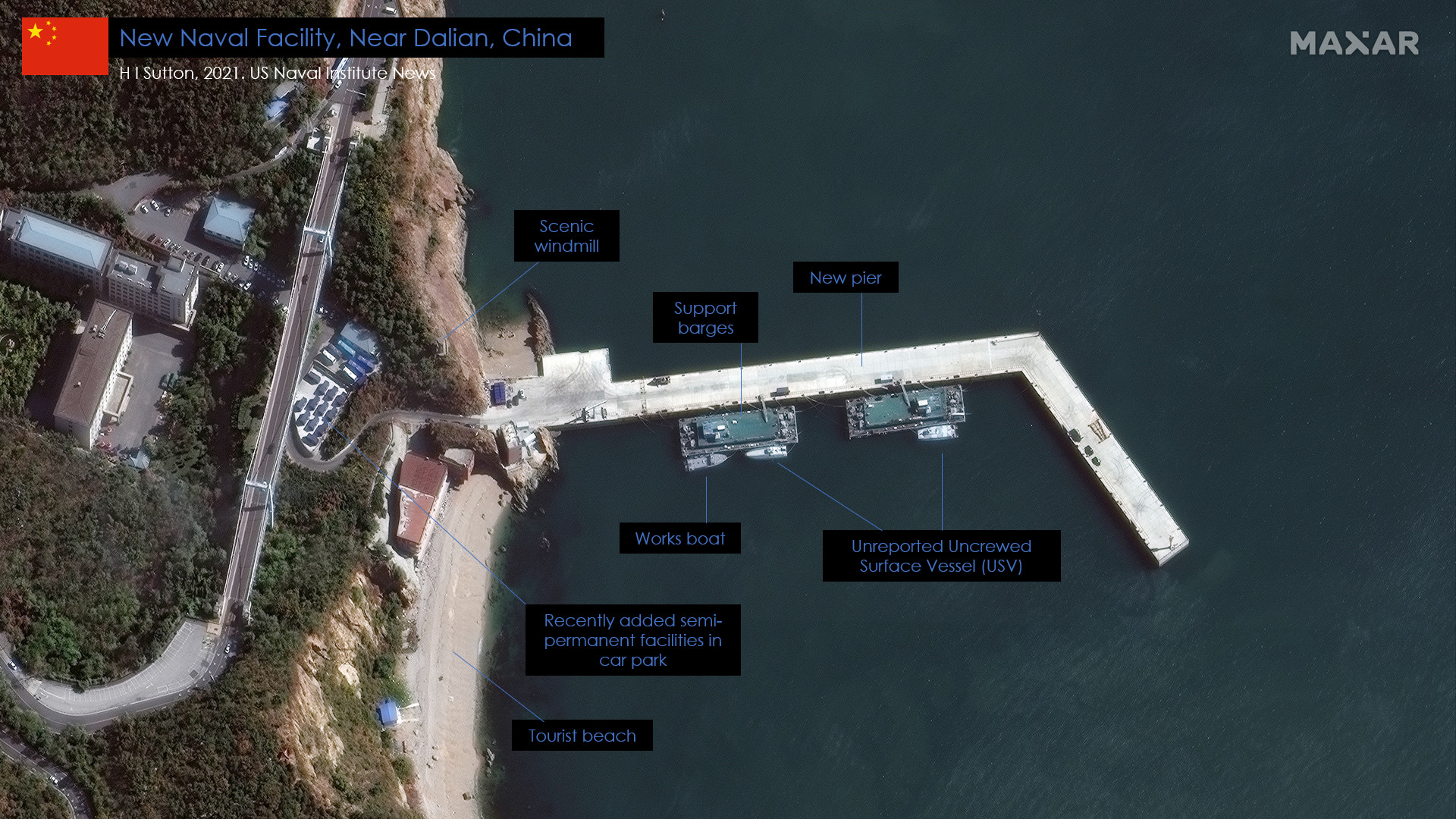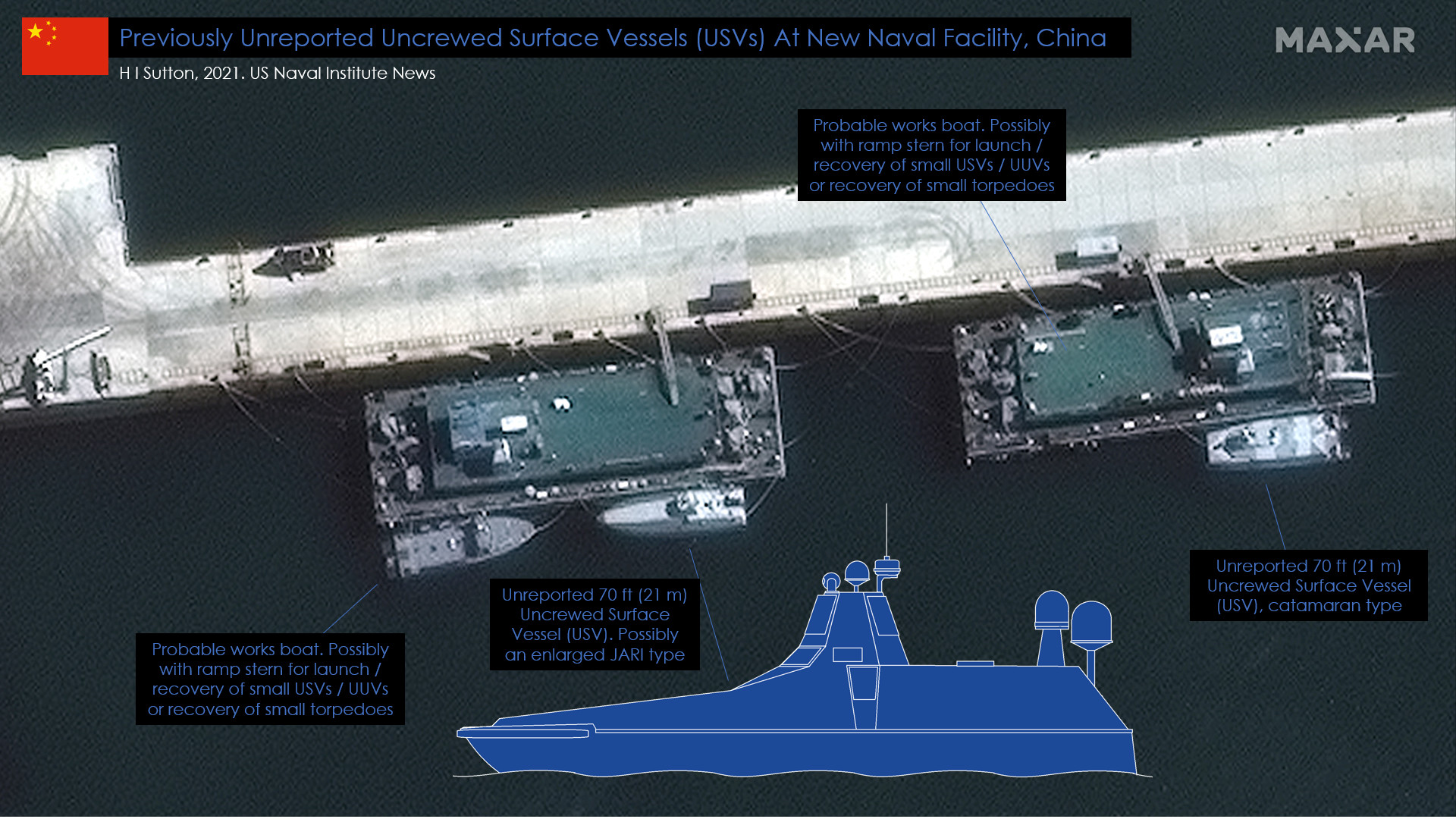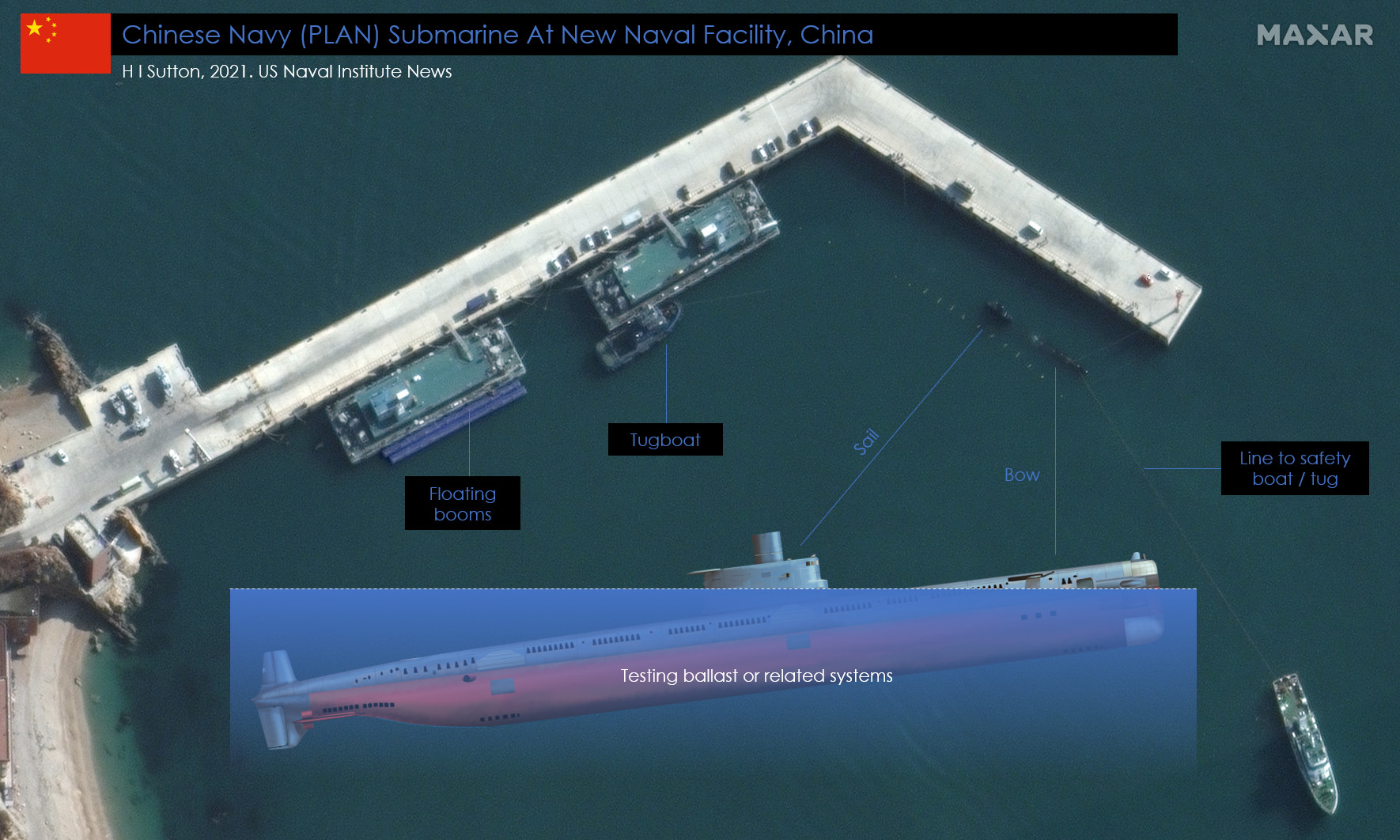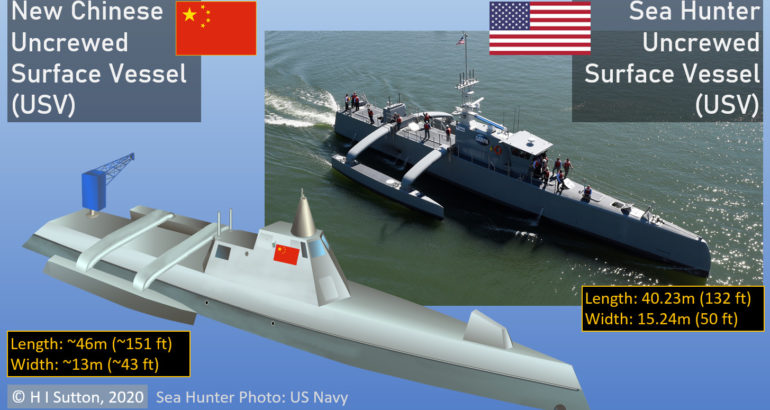
In front of scenic cliffs and an ornamental European-style windmill is a secret People’s Liberation Army Navy pier. Here, at a former tourist resort on China’s northern coast, is where the PLAN is developing some of its most secretive, and previously unreported, naval programs, USNI News has learned.
The pier near Dalian is where China is testing its large uncrewed surface vessels (USVs), according to satellite photos provided to USNI News by Maxar and an analysis of open-source intelligence.
Construction of the new pier started in early 2016 and took about a year, according to satellite photos. Since then it has been used intermittently by the PLAN. When in use, two large work barges are moored alongside to provide basic facilities for crews and support staff. The facility itself has only the most basic semblance of a military base. Taken together this suggests that it is an auxiliary facility, used to support short-term trials and exercises.
Submarines have also been observed at the pier. On one occasion, a Type-035 Ming Class boat was seen performing pier-side ballast tests, according to photos provided to USNI News by Maxar. The facility may be used as overspill for the nearby Xiaopingdao naval base.
The new base’s status as an auxiliary site brings benefits as an uncrewed surface vessels (USVs) testbed like being further from main naval bases, giving the unmanned more space to operate safely. The site is just nine miles from the submarine base at Xiaopingdao, and 5 miles as the crow flies from Dalian. And what may be more significant is that it’s only a mile from a civilian yacht arena where a USV was seen in 2020. That USV, known as the ‘JARI’, is similar to one of the two new USVs seen at the pier.

The JARI, possibly referencing the Jiangsu Automation Research Institute, is an noteworthy USV in its own right. The PLAN first revealed it as a model in 2018, launched a prototype in August 2019 and conducted sea trials in January 2020. The small 50 foot-long craft has been described as a mini-destroyer because of its ambitious weapons and sensor fit. With a remote weapons station (RWS), it is intended to be armed with a small vertical launch system (VLS) for surface to air missiles and two lightweight torpedo tubes. Sensors include phased-array radars, electro-optical devices and sonar.
The new unreported USV has a similar overall form to JARI. It has a similar superstructure and appears to have the same communications radome over the transom. It also has what appears to be openings for torpedo tubes on each side, like the JARI. But the new USV is much larger than the JARI. It is about 70 feet long compared to 50 feet. The superstructure is generally more substantial. The lower hull may have been changed to a simple monohull configuration compared to the JARI’s semi-catamaran.

The JARI was developed by CSSC (China State Shipbuilding Corporation), specifically by their No. 702 Research Institute and No. 716 Research Institute. By extension, this new type is from the same lineage.
The other unreported USV is a large catamaran, also with a length of approximately 70 feet. This is a popular configuration for USVs and few deatils about the USV are apparent beyond the hullfrom. Its proximity to the ‘JARI’ based model suggests comparative testing, so it may be generally similar.
The original JARI can be seen as unrealistically over-armed. The new larger version may have a simplified mission with a narrower set of weapons. For example, it is unclear whether a gun is mounted because the forward deck appears clear. This may reflect a maturing of ideas, with USVs becoming more closely aligned to realistic concept of operations.

China has a significant number of USV projects. Several have been revealed at arms shows, possibly reflecting export models. Others, such as a copy of the U.S. Navy’s Sea Hunter, have only been observed in open source intelligence. However there are no signs of the PLAN testing the ‘Sea Hunter’ style USV, so it is possible that it, too, is a purely commercial venture. But the vessels observed at this new facility have not been revealed. This suggests that they are the PLAN’s main USV projects intended for home use.
Most leading powers are testing unmanned naval technology, but China has only revealed some of its programs. The two observed at the pier are generally larger and more robust. This points to the fast pace of Chinese research and development.
The emergence of the new facility shows the Chinese are putting a previously unknown emphasis on armed uncrewed systems as a key developmental effort.





